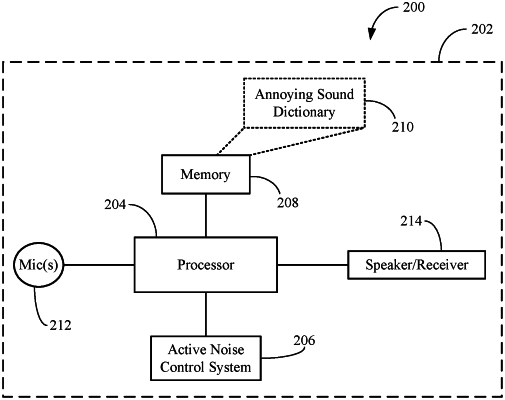| CPC G10L 21/0216 (2013.01) [G10L 17/02 (2013.01); G10L 21/0208 (2013.01); H04R 1/1083 (2013.01); H04R 3/002 (2013.01); H04R 5/04 (2013.01); H04R 25/505 (2013.01); G10L 2021/02087 (2013.01); G10L 2021/02163 (2013.01); H04R 5/033 (2013.01); H04R 2460/01 (2013.01)] | 20 Claims |

|
1. A method implemented by an ear-worn electronic device, comprising:
storing, in a memory of the device, noise fingerprints representative of annoying sounds identified by a wearer of the device;
capturing a new annoying sound in response to a wearer input;
communicating the new annoying sound to a server;
receiving, from the server, a new noise fingerprint representative of the new annoying sound;
storing the new noise fingerprint in the memory;
identifying, by a processor of the device, different background noises present in an acoustic environment of the wearer;
determining, by the processor, which of the background noises corresponds to the new noise fingerprint; and
attenuating, by the processor, the background noise corresponding to the new noise fingerprint in an output signal provided to a speaker or a receiver of the device.
|